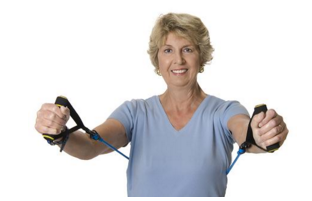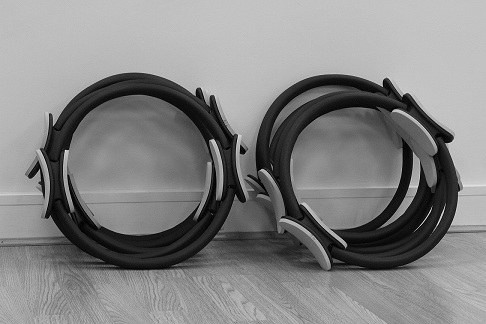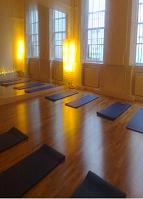In this Pilates Video you are going to learn three Pilates & Core Strength Exercise, that tone and strengthen your whole midsection or midriff.
.
Keep your core muscles, your TVA (Transverse Abdominis) slightly engaged throughout.
(1) Pilates Roll-Up >> Focuses on straight abdominal muscles, your rectus abdominis)
This variation is for those who’s mid and lower back is ok, avoid if you have any lower or mid back issues. Aim to control the movement, slowly easy vertebrae by vertebrae onto the mat and roll the back in the same way off the mat. Stretch the whole body out in between. Avoid any jerky or rushed moves, especially as you roll up.
.
(2) Pilates Side-Bend >> Focuses on toning and strengthening your waist, your sides or love-handles
This exercise is not for somebody with neck or shoulder issues. Place your elbow below your shoulder, choose your leg and knee variation. Breath out as you lift your hip, breath in to lower your hip. Control the movement, slow it down a good bit to intensity the exercise. You will ultimately benefit more from the exercise if you do it slower, plus you increase your body awareness as well.
.
(3) Pilates Swimming or Super-Man/Woman >> Focuses on mid & lower back strength, includes a small bit of a stretch for the whole back as well.
This exercise is generally very good for strengthening your lower back and simultaneously stretches your whole back, neck and spine out, if done correctly. Pay attention to keeping your chin tucked in, your neck long, stretch through one pair of limbs away as you breath out, breath in when switching over.
.
To-Do-List:
(1) Do a brief warm-up of 5-8min including some rotational moves for your neck, back, shoulders and your lower back or do some cardio exercises for 5-8min e.g. brisk walking.
(2) Do each exercise up to 10 times, assuming your back, neck, shoulders etc. agree with the movement and there is no pain. Do three sets of each exercise.
(3) Be aware how easy or challenging it is to roll-up or to lift the hip up (compare right and left for the Pilates Side-Bend – class participants often experience differences, as one side might be stronger than the other).
(4) I suggest to keep an exercise and activity diary, which will allow you recognize progress. Make a note of
(4.1) when you exercise time/date/duration,
(4.2) how many reps / sets you do,
(4.3) how the exercises are getting easier over time. Come up with a rating system.
I use a scale from 1 to 10 ( 1 = very very easy; 10 = extremely hard, nearly impossible).
.
Let me know how you get on and if you have any questions.
Martin







